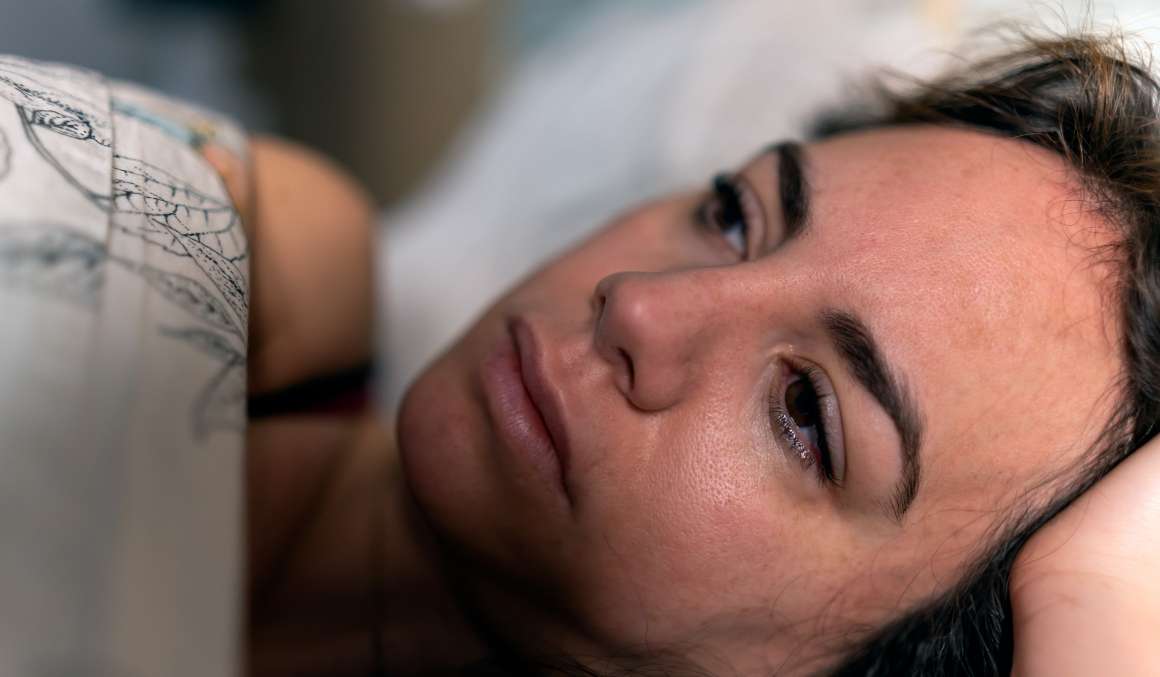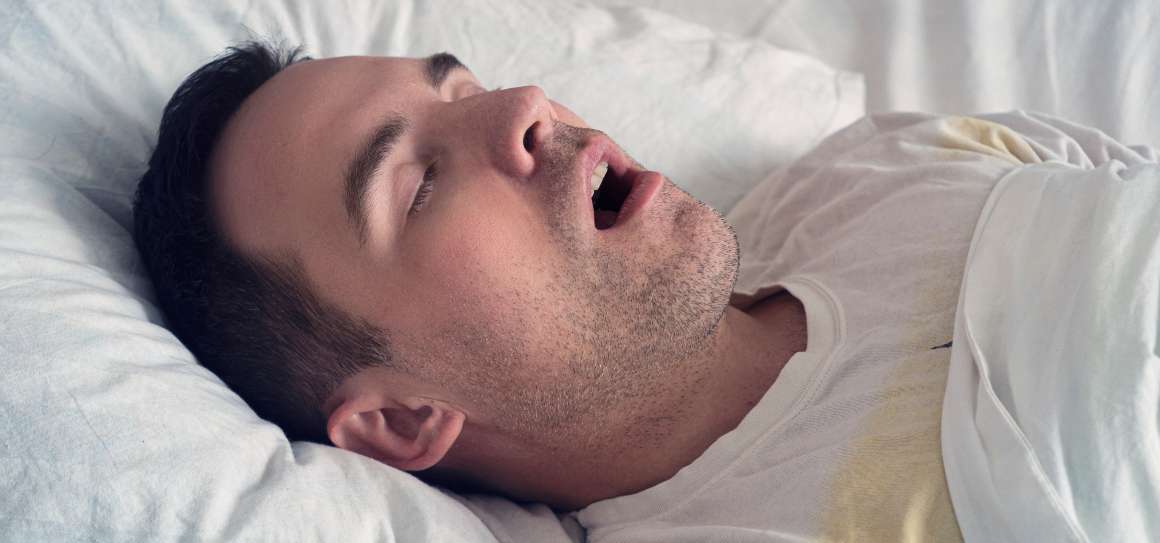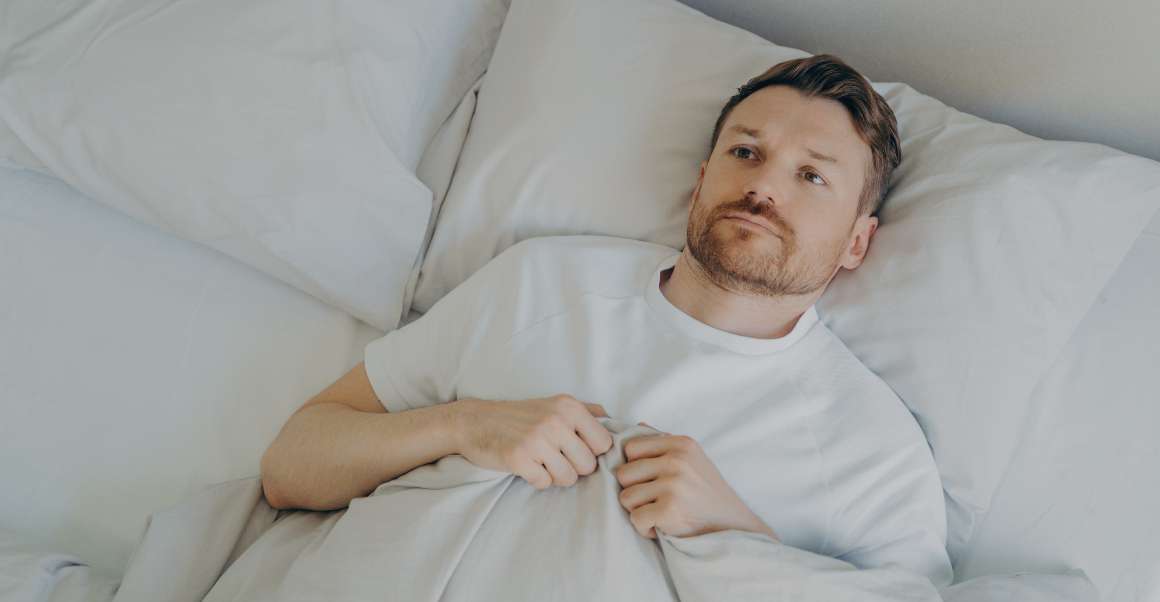Sleep Paralysis
Published:
Experiencing sleep paralysis can be a terrifying ordeal, leaving individuals feeling helpless and vulnerable. This complex phenomenon has been the subject of numerous studies and cultural beliefs throughout history. In this comprehensive blog post, we will delve into the intricacies of sleep paralysis, exploring its causes, risk factors, and various treatment approaches.
Contents:
- Causes and Risk Factors for Sleep Paralysis
- Cultural Beliefs About Sleep Paralysis
- Managing Occasional Episodes without Medical Intervention
- Seeking Professional Help for Persistent Cases
- Treatment Approaches for Sleep Paralysis
- Preventative Measures Against Sleep Paralysis
- FAQs in Relation to Sleep Paralysis
- Conclusion
We'll examine the relationship between REM sleep and sleep paralysis while differentiating isolated episodes from recurrent ones. Additionally, we will discuss how anxiety disorders and stress contribute to this condition. Cultural perspectives on susceptibility to sleep paralysis from Italian, Danish, and Egyptian backgrounds will also be explored.
Furthermore, our discussion will cover managing occasional episodes without medical intervention by maintaining healthy sleeping patterns and alternative sleeping positions. For persistent cases requiring professional help, we'll guide you through when to consult a healthcare professional as well as the role of polysomnography in diagnosing sleep disorders.
Finally, we'll outline various preventative measures against sleep paralysis such as establishing consistent bedtime routines and creating an ideal sleeping environment for better restorative slumber.

Causes and Risk Factors for Sleep Paralysis
Sleep paralysis occurs when the transition between wakefulness and rapid eye movement (REM) sleep becomes disrupted, leading to a temporary inability to move or speak. There are several factors that can contribute to this disruption in the REM cycle, including anxiety disorders, physical and emotional distress, abruptly stopping alcohol consumption, or discontinuing antidepressant medications suddenly.
Anxiety Disorders as a Contributing Factor
Anxiety disorders, such as panic disorder and post-traumatic stress disorder (PTSD), have been linked with an increased risk of experiencing sleep paralysis. The heightened state of alertness connected to these afflictions may impede the usual transition between NREM and REM rest cycles. Additionally, individuals suffering from anxiety disorders often experience excessive daytime sleepiness due to poor quality nighttime rest, which further exacerbates their susceptibility towards developing episodes.
The Role of Stress in Triggering Episodes
Cortisol levels may be heightened during times of stress, resulting in an irregular sleep cycle that increases the probability of REM parasomnia and hypnagogic hallucinations. High levels of cortisol released during periods of acute stress may disrupt normal patterns related to falling asleep or staying asleep throughout the night. This irregularity increases the likelihood that an individual will enter into REM parasomnia states where hypnagogic hallucinations become more prevalent alongside instances whereby they can't move their entire body temporarily upon awakening unexpectedly from slumber itself.
Besides psychological factors like anxiety disorders or elevated stress levels contributing towards onset incidences directly themselves; certain lifestyle choices might inadvertently increase risks too by negatively impacting overall health status thereby predisposing someone even further towards developing episodes regularly over time as well. For example, sleep deprivation resulting from inconsistent bedtimes or inadequate amounts of restorative slumber each evening can lead to an increased likelihood of experiencing sleep paralysis.
Similarly, abruptly stopping alcohol consumption or suddenly discontinuing antidepressant medications may trigger instances whereby REM paralysis occurs more frequently than usual due to the sudden change in brain chemistry these actions provoke. It is important for individuals who are considering making changes related directly with their medication regimens to consult first alongside healthcare professionals before doing so since they will be able to provide guidance on how best to manage potential side effects associated specifically towards withdrawal processes themselves which might otherwise exacerbate risks unnecessarily instead.
Cultural Beliefs About Sleep Paralysis
Sleep paralysis has been a topic of interest and fear across various cultures throughout history. The way people perceive their experiences with sleep paralysis is often shaped by cultural beliefs, which can influence the frequency of occurrences and likelihood of experiencing hallucinations during an episode. In this section, we will explore some perspectives on sleep paralysis from different cultures.
Italian and Danish Perspectives on Susceptibility
In Italy, sleep paralysis is known as "Pandafeche", a term derived from the belief that witches sit on the chests of sleeping individuals to steal their breath. This concept suggests that those who experience sleep paralysis are more susceptible to witchcraft or supernatural influences. Similarly, in Denmark, it is believed that "mare rides," where evil spirits or supernatural beings ride atop sleeping individuals causing them distress, could be responsible for episodes of sleep paralysis.
Egyptian Fears Surrounding Its Occurrence
In Egypt, there's a widespread belief that the "Jinn", supernatural creatures mentioned in Islamic mythology and pre-Islamic Arabian folklore, are responsible for causing sleep paralysis episodes. Egyptians believe these entities have malicious intentions towards humans; thus they associate great fear with experiencing an episode due to potential harm caused by Jinn attacks.
These cultural interpretations highlight how beliefs about susceptibility to external forces may exacerbate feelings of helplessness experienced during episodes while also increasing anxiety surrounding the phenomenon. It is essential to understand these perspectives as they can shape how individuals perceive their experiences with sleep paralysis and influence its impact on their lives.
As we continue exploring sleep paralysis, it's crucial to recognize that modern scientific explanations provide valuable insights into understanding this complex phenomenon. Research has shown that sleep deprivation, irregular sleep schedules, and other factors such as anxiety disorders or post-traumatic stress disorder (PTSD) can contribute significantly to the occurrence of sleep paralysis episodes. By addressing the root causes, individuals can work towards minimizing sleep paralysis and improving their quality of life.
Ultimately, acknowledging cultural beliefs surrounding sleep paralysis helps us better comprehend the fears associated with this experience while also recognizing that contemporary research offers evidence-based approaches for managing and preventing episodes effectively.

Managing Occasional Episodes without Medical Intervention
Sleep paralysis can be an alarming occurrence, but it may be controllable through lifestyle modifications and personal care techniques. By adopting healthier habits and exploring alternative sleeping positions, you may be able to reduce the frequency of sleep paralysis episodes without seeking medical intervention.
Importance of Maintaining Healthy Sleeping Patterns
Maintaining a regular sleep schedule is crucial for preventing sleep disorders like sleep paralysis. Ensure that you get an adequate amount of restorative slumber every night by going to bed and waking up at consistent times. Maintaining a regular sleep schedule helps to keep your body's internal clock, the circadian rhythm, in check and ensure quality restorative slumber.
- Avoid excessive daytime napping as it can disrupt your nighttime sleep cycle.
- Limit late-night caffeine or alcohol consumption since they can interfere with REM sleep stages.
- Create a relaxing bedtime routine that includes activities such as reading or taking a warm bath to signal your body that it's time for rest.
Exploring Alternative Sleeping Positions
The position in which you fall asleep might contribute to the occurrence of sleep paralysis. For instance, research has shown that people who frequently experience this phenomenon are more likely to report falling asleep on their backs (source). Experimenting with different sleeping positions could help minimize instances where episodes occur:
- Side-sleeping: Sleeping on either side reduces pressure on the airways and promotes better breathing during slumber, which may help prevent sleep paralysis.
- Elevated head position: Elevating your head using a pillow or an adjustable bed can also improve airflow and reduce the likelihood of experiencing episodes.
In addition to these strategies, improving overall sleep hygiene is essential for preventing sleep paralysis. This includes creating a comfortable sleeping environment with minimal distractions, such as noise and light. Furthermore, regular exercise and stress management techniques like meditation or yoga can contribute to better quality sleep by promoting relaxation and reducing anxiety levels that might trigger episodes.
Seeking Professional Help for Persistent Cases
In cases where sleep paralysis is causing significant anxiety or impacting overall quality of life, consulting with a healthcare professional may be beneficial. A healthcare professional can assess an individual's health condition by utilizing various methods, including physical exams, analyzing medical records/medications and assessing mental wellbeing.
When to Consult a Healthcare Professional
If sleep paralysis is occurring often or disrupting daily life, a healthcare practitioner should be consulted. Some signs that indicate the need for professional assistance include:
- Persistent episodes despite implementing self-help strategies such as improving sleep hygiene and maintaining regular sleep schedules.
- Excessive daytime sleepiness due to disrupted nighttime rest caused by frequent episodes of REM parasomnia.
- Anxiety surrounding bedtime or fear of falling asleep because of potential episodes.
- The presence of other symptoms that could suggest underlying conditions like panic disorder or post-traumatic stress disorder (PTSD).
The Role of Polysomnography in Sleep Disorder Diagnosis
A thorough evaluation by a healthcare professional might involve recommending an overnight stay at a specialized facility known as a sleep center. Here, patients undergo polysomnography—a comprehensive test that records brain waves, eye movements, heart rate and rhythm, breathing patterns, and oxygen levels during different stages of the non-rapid eye movement (NREM) and rapid eye movement (REM) cycles. This diagnostic tool helps identify any abnormalities in the patient's sleeping patterns which could contribute to their recurrent experiences with hypnagogic hallucinations while being unable to move their entire body.
Healthcare professionals can use the results of polysomnography and other assessments to discern if any underlying medical issues or sleep disorders are causing your episodes of sleep paralysis. For example, a diagnosis of narcolepsy could explain both excessive daytime sleepiness and frequent occurrences of REM parasomnia. In such cases, appropriate treatment for the identified condition might help alleviate symptoms related to sleep paralysis as well.
In addition to addressing potential underlying causes, healthcare providers can also offer guidance on effective strategies for managing anxiety surrounding these episodes—such as relaxation techniques or cognitive-behavioral therapy (CBT)—which may prove beneficial in reducing their frequency and severity over time.

Treatment Approaches for Sleep Paralysis
Treatment for sleep paralysis often involves addressing any underlying issues that might contribute to its occurrence. For example, if anxiety disorders are identified as contributing factors, then appropriate therapeutic interventions would likely prove helpful in alleviating symptoms related not only specifically towards those concerns but also subsequently reducing instances whereby episodes occur too frequently.
Addressing Anxiety Disorders as a Treatment Approach
Paralysis during sleep may be impacted by the presence of anxiety issues. Cognitive-behavioral therapy (CBT) is an effective treatment option for individuals suffering from anxiety-related sleep disturbances. CBT focuses on identifying and changing negative thought patterns, which can help reduce excessive daytime sleepiness and improve overall mental health. Medications like SSRIs can be recommended by healthcare professionals to help manage anxiety symptoms efficiently.
Establishing Regular Bedtime Routines
Maintaining a regular sleep schedule is crucial in preventing disruptions during REM cycles associated with onset incidences of sleep paralysis. Establishing consistent bedtime rituals helps promote optimal conditions conducive towards achieving restful slumber consistently each night:
- Fall asleep at the same time every day: Going to bed and waking up at the same time daily helps regulate your body's internal clock, ensuring you get enough non-rapid eye movement (NREM) and rapid eye movement (REM) sleep.
- Create a relaxing pre-sleep routine: Engaging in calming activities such as reading, taking a warm bath, or practicing mindfulness meditation can help signal your body that it's time to wind down and prepare for sleep.
- Limit exposure to screens before bedtime: The blue light emitted by electronic devices like smartphones and laptops can interfere with the production of melatonin, a hormone responsible for regulating sleep. It is recommended to avoid screen usage at least an hour before bed.
In cases where sleep paralysis persists despite addressing anxiety disorders and establishing regular bedtime routines, further evaluation may be necessary. A healthcare provider may suggest a polysomnography, an overnight test that records brain waves, eye movements, heart rate and other body functions while sleeping. This comprehensive assessment helps identify any underlying REM parasomnia or other potential causes contributing to recurrent episodes of sleep paralysis.
Preventative Measures Against Sleep Paralysis
Adopting healthy lifestyle habits and establishing regular routines surrounding bedtime rituals helps promote optimal conditions conducive towards achieving restful slumber consistently each night. This ultimately aids prevention efforts significantly over time by minimizing the likelihood of experiencing disruptions during REM cycles associated directly with the onset of sleep paralysis incidences themselves.
Importance of Consistent Sleep Schedules
Maintaining a consistent sleep schedule is crucial in preventing sleep paralysis episodes. Going to bed and waking up at the same time every day, even on weekends, can help regulate your body's internal clock, also known as circadian rhythm. Maintaining a steady circadian rhythm can help ensure that the shift between NREM and REM sleep is seamless, thereby diminishing the odds of going through sleep paralysis.
- Aim for 7-9 hours of uninterrupted sleep per night.
- Avoid excessive daytime napping or irregular sleeping patterns that may disrupt nighttime restfulness.
- Create a relaxing pre-sleep routine to signal your body that it's time to wind down and prepare for restorative slumber.
Creating an Ideal Sleeping Environment
An ideal sleeping environment plays a significant role in preventing episodes of sleep paralysis. Ensuring that your bedroom is comfortable, quiet, dark, and cool can contribute to better quality sleep overall. Here are some tips on how you can optimize your bedroom environment:
- Temperature: Keep room temperature between 60-67°F (15-19°C), as cooler temperatures have been found to promote better sleep quality.
- Lighting: Minimize exposure to artificial light sources, such as electronic devices and bright room lights, before bedtime. Consider using blackout curtains or a sleep mask if necessary.
- Noise: Eliminate disruptive noises by using earplugs, white noise machines, or soundproofing measures where possible.
- Mattress and pillows: Invest in a comfortable mattress and supportive pillows that cater to your preferred sleeping position. Replace them every few years for optimal comfort and support.
In addition to these preventative measures, it's essential to address any underlying issues that may contribute to sleep paralysis occurrences. For example, managing stress levels through relaxation techniques like meditation or yoga can help alleviate anxiety-related triggers of sleep disorders. Furthermore, avoiding alcohol consumption close to bedtime is recommended since it can interfere with the normal progression of REM sleep cycles leading up towards instances whereby episodes occur too frequently. By incorporating these strategies into your daily routine alongside maintaining healthy lifestyle habits overall, such as regular exercise, you'll be well on your way toward preventing future episodes of this unsettling phenomenon known as sleep paralysis.
FAQs in Relation to Sleep Paralysis
What is the major cause of sleep paralysis?
The major cause of sleep paralysis is a disruption in the transition between rapid eye movement (REM) sleep and wakefulness. This causes temporary muscle weakness or paralysis, preventing individuals from moving during an episode. Factors such as irregular sleep patterns, stress, anxiety disorders, and certain medications can contribute to this disruption.
What are the horrors of sleep paralysis?
During sleep paralysis episodes, individuals may experience vivid hallucinations or sensations like pressure on their chest or difficulty breathing. These experiences can be terrifying due to being unable to move while they occur. The combination of fear and immobility often leads to increased feelings of panic and helplessness.
What is the truth about sleep paralysis?
Sleep paralysis is a natural phenomenon that occurs when there's a misalignment between REM atonia - muscle relaxation during REM stage - and waking up. It typically lasts for several seconds to minutes but poses no direct threat to one's health. However, frequent episodes could indicate underlying issues like anxiety disorders or poor sleeping habits that require attention.
Conclusion
Sleep paralysis is a common and often frightening experience that occurs when the body transitions between different stages of sleep. It is characterized by the inability to move the entire body, often accompanied by hypnagogic hallucinations and a feeling of suffocation. Sleep paralysis occurs during the rapid eye movement (REM) stage of the sleep cycle, which is when most dreaming occurs.
While occasional episodes of sleep paralysis may not require medical intervention, persistent cases should be addressed by healthcare professionals. Effective treatment approaches include establishing a regular sleep schedule and improving sleep hygiene. Addressing underlying anxiety disorders can also help treat sleep paralysis.
If you are experiencing symptoms of sleep paralysis or other sleep disorders, it is important to consult a healthcare professional for proper treatment. Excessive daytime sleepiness, sleep deprivation, and panic disorder are all associated with sleep paralysis. Other sleep disorders, such as REM parasomnia and post-traumatic stress disorder, can also cause sleep paralysis.













